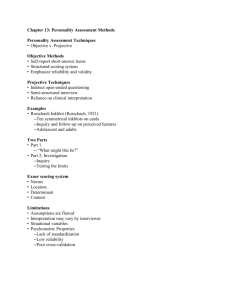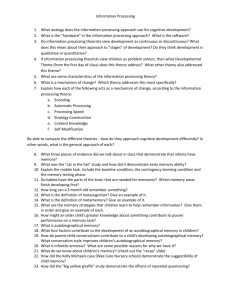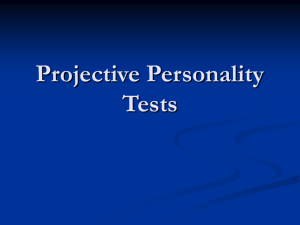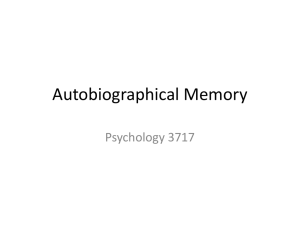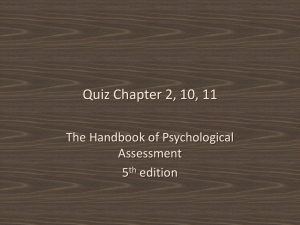Methods and Techniques of Personality Assessment
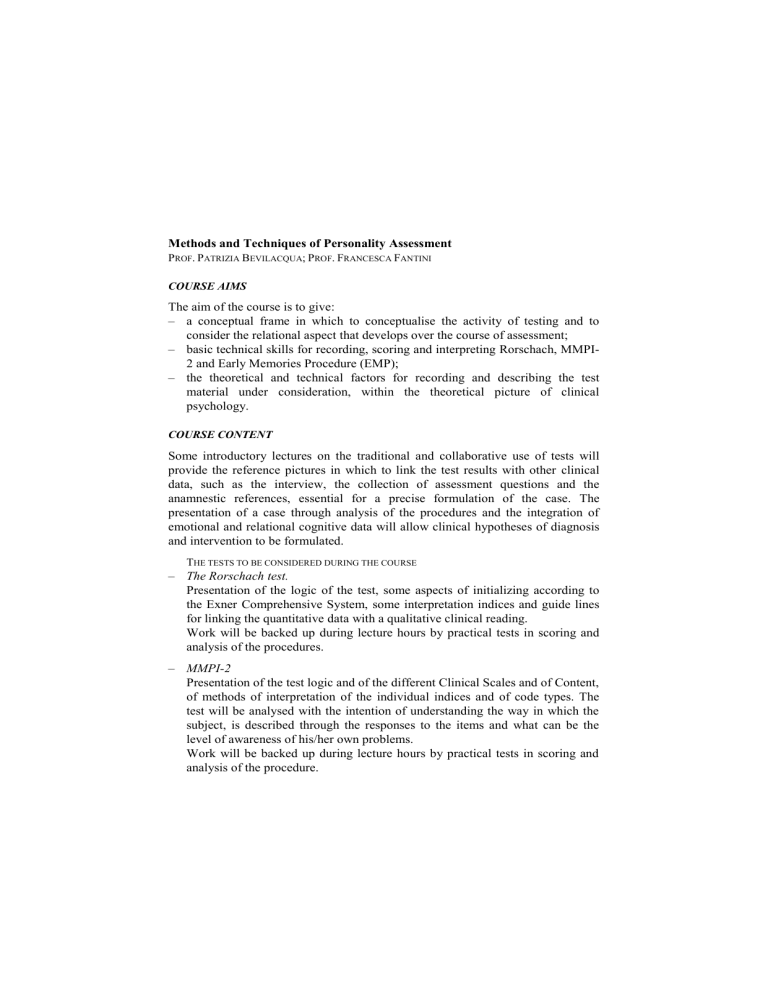
Methods and Techniques of Personality Assessment
P
ROF
.
P
ATRIZIA
B
EVILACQUA
; P
ROF
.
F
RANCESCA
F
ANTINI
COURSE AIMS
The aim of the course is to give:
– a conceptual frame in which to conceptualise the activity of testing and to consider the relational aspect that develops over the course of assessment;
– basic technical skills for recording, scoring and interpreting Rorschach, MMPI-
2 and Early Memories Procedure (EMP);
– the theoretical and technical factors for recording and describing the test material under consideration, within the theoretical picture of clinical psychology.
COURSE CONTENT
Some introductory lectures on the traditional and collaborative use of tests will provide the reference pictures in which to link the test results with other clinical data, such as the interview, the collection of assessment questions and the anamnestic references, essential for a precise formulation of the case. The presentation of a case through analysis of the procedures and the integration of emotional and relational cognitive data will allow clinical hypotheses of diagnosis and intervention to be formulated.
T
HE TESTS TO BE CONSIDERED DURING THE COURSE
– The Rorschach test.
Presentation of the logic of the test, some aspects of initializing according to the Exner Comprehensive System, some interpretation indices and guide lines for linking the quantitative data with a qualitative clinical reading.
Work will be backed up during lecture hours by practical tests in scoring and analysis of the procedures.
– MMPI-2
Presentation of the test logic and of the different Clinical Scales and of Content, of methods of interpretation of the individual indices and of code types. The test will be analysed with the intention of understanding the way in which the subject, is described through the responses to the items and what can be the level of awareness of his/her own problems.
Work will be backed up during lecture hours by practical tests in scoring and analysis of the procedure.
– Early Memories Procedure (EMP)
Presentation of the cognitive-perception theory that is the foundation of conceptualisation of biographical memory and of the structure of the test. The structured methodology of clinical analysis of the patient’s memories will allow identification of the developmental stalemates that in the present condition the functioning of the personality.
Work will be backed up during lecture hours by practical tests in scoring and analysis of the procedure.
READING LIST
On the collaborative use of tests
S.E.
F INN , Nei panni dei nostri clienti, Giunti OS, 2009.
On the Rorschach test:
Specific reading material will be provided during lectures.
On the MMPI-2
A.
B.
C ALDWELL , What do the MMPI Scales Fundamentally Measure? Some hypotheses, Journal of
Personality Assessment, 2001, 76 (1), 1-17.
Specific reading material will be provided during lectures.
On the Early Memories Procedure (EMP):
A.R.
B RUHN , Cognitive-Perceptual theory and the projective use of autobiographical memory,
Journal of Personality Assessment, 1990 a, 55, 95-114.
A.R.
B RUHN , The Early Memories Procedure: A projective test of autobiographical memory (Part
I), Journal of Personality Assessment, 1992 a, 58, 1-15.
A.R.
B RUHN , The Early Memories Procedure: A projective test of autobiographical memory (Part
II), Journal of Personality Assessment, 1992 b, 58, 326-346.
Additional tests for students taking the old order degree course are to be agreed with the lecturer.
TEACHING METHOD
Lectures in the lecture room and hours of practical exercises.
During the hours of practical exercises (held by the lecturer together with experts on the material, these are an integral part of the course), analysis of procedures will allow an overall view and provide a methodology of approach to the interpretation.
ASSESSMENT METHOD
The course will consist of a final assessment in part oral and part written. The student will be required to interpret the data recorded in the tests examined during the course and to know the theoretical pictures into which to insert the psychological assessment.
NOTES
Further information can be found on the lecturer's webpage at http://docenti.unicatt.it/web/searchByName.do?language=ENG or on the Faculty notice board.
